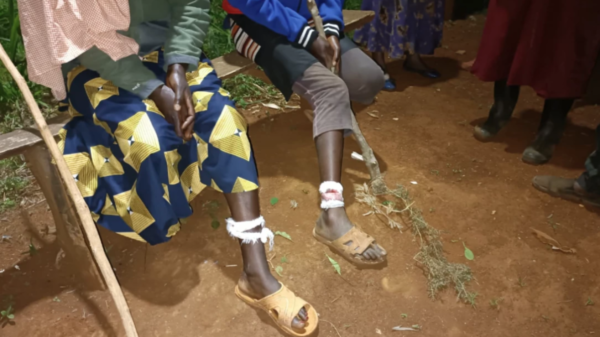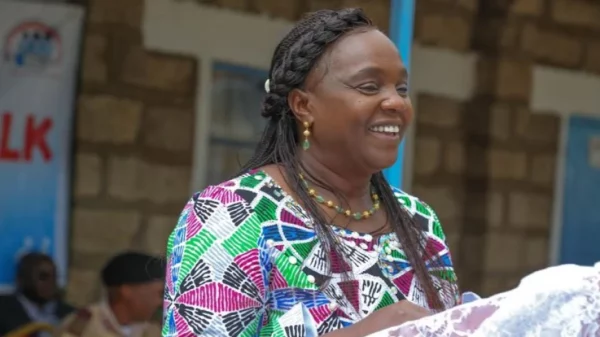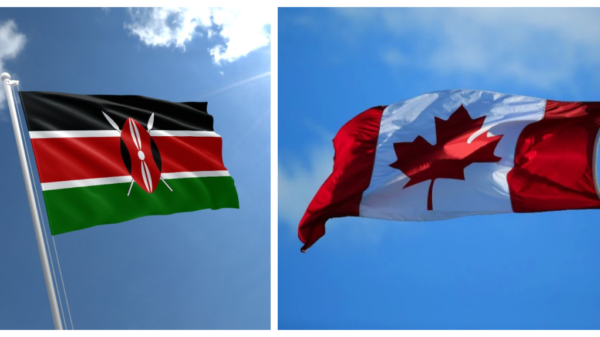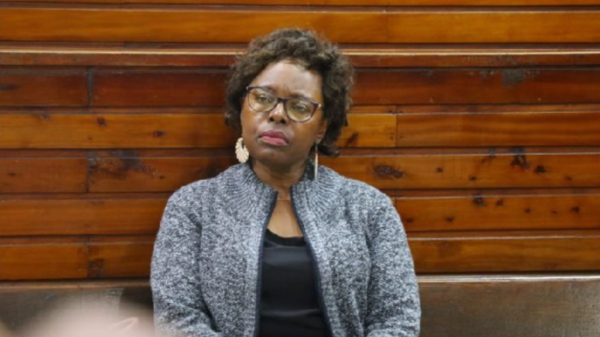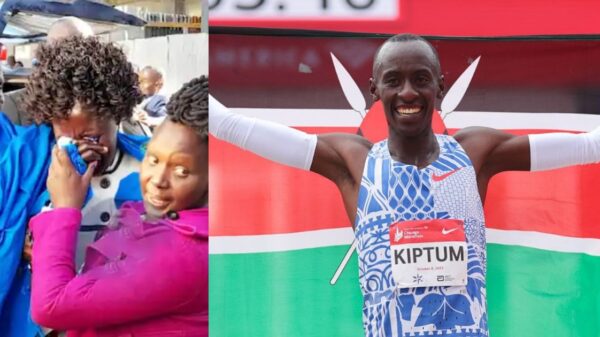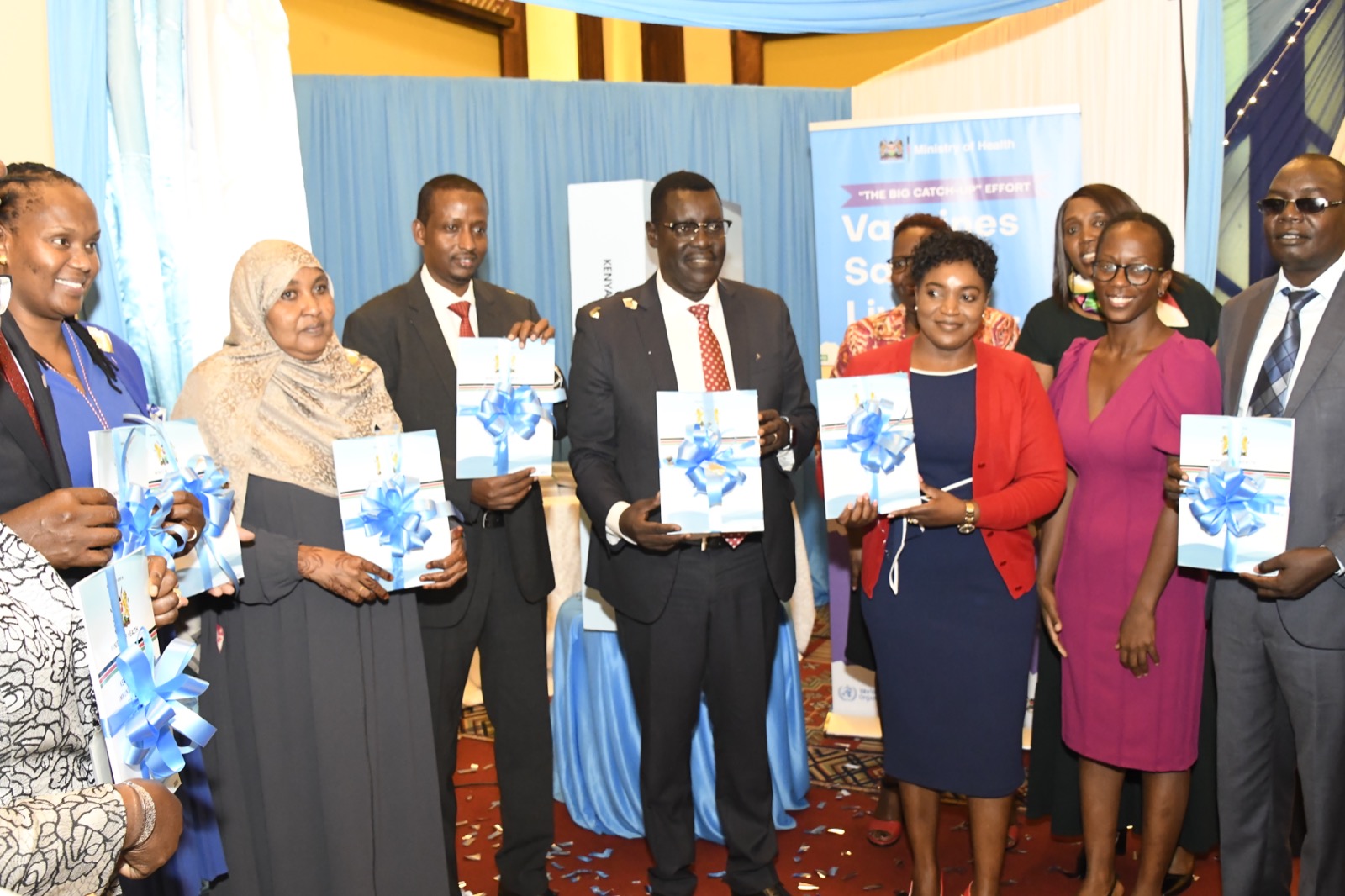- Health CS Susan Nakhumicha during the launch of the world immunization week, unveiled new policies that the state would wield to bolster immunization exercise across the country.
- So far, the countries’ immunization coverage currently stands at 80% as per the last Kenya Demographic Health Survey, minor improvement from 2014.
- The Global alliance for vaccine and immunization, has also aided the initiative by supplying vehicles to support vaccine collection from regional depots.
Follow us on Facebook and Twitter for real time updates
Kenya’s routine immunisation coverage currently stands at 80% as per the last Kenya Demographic Health Survey, a slight improvement from 2014.
Health Cabinet Secretary (CS) Susan Nakhumicha said that vaccination is one of the most cost-effective measures of preventing disease insisting that since 2014, the health system has navigated many changes including devolution, the Covid-19 pandemic, and it is commendable that our immunisation programmes have remained resilient.

Speaking in Nairobi on Wednesday during the launch of the world immunisation week and immunisation policy guideline, the CS said that Kenya has made significant strides to improve access to immunisation services.

“Over the years, the national government, county governments and partners have invested in immunisation in the form of cold chain equipment, capacity building of health workers, service delivery strategies such as campaigns and outreaches,” said Nakhumicha.
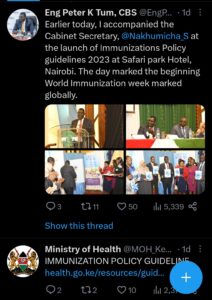
She explained that so far, through support from Global alliance for vaccine and immunisation, 37 counties have been provided with vehicles to support vaccine collection from regional depots.
“All counties were also provided with a motorbike to support cold chain equipment repair and maintenance,” said the CS.
Nakhumicha explained that these initiatives have improved access and helped to reduce the limitation of vaccine preventable diseases.
“Indeed, the return on investment for immunisation is high, the wider economic value of the immunisation shows a double digit return on investment for each shilling spent on immunization,” she said.
She continued… “The government is keen on strengthening the primary health care structure through innovative financing of health services including immunisation. This is on the backdrop of the upcoming donor transition: Kenya is due to transition from Global alliance for vaccine and immunisation support by 2030. We must therefore put all our efforts together in reaching the last child, no one should be left behind.”
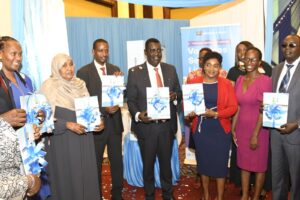
The CS said that while there has been an overall improvement in coverage, they are concerned that at county level, the numbers that are unvaccinated continue to increase.
“Despite the great efforts, some communities have still been left out consistently, and others not fully vaccinated. Unfortunately, most of the populations that miss out on vaccination are usually the most vulnerable,” she said.
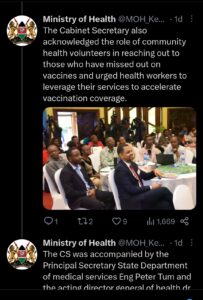
Nakhumicha said that in the past year to date, Kenya has grappled with measles outbreaks, an occurrence that clearly denotes significant immunity gaps in the population.
“Whereas outbreak responses were conducted, it is important that we improve routine coverages to avert the outbreaks in a more efficient and cost-effective fashion. I would therefore request that we focus on increasing the coverage of the second dose of measles, as we put in strategies for other vaccines,” said the CS.
She insisted on the need to ensure that girls are protected against cervical cancer through HPV vaccination.







